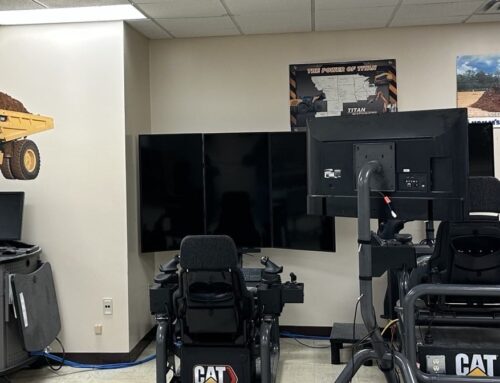
Simulation training is highly successful when it comes to engaging learners and teaching how to perform tasks, techniques, or processes. The ability to train multiple people in the same way, expose them to real-world situations in the safety of the virtual environment, makes simulation training an efficient and effective choice for organizations. Training in the virtual world gives the learner an opportunity to experience real-world scenarios, get immediate feedback, and gain knowledge of what to do in each situation. The learner organizes information and in turn builds a “mental model.” When faced with the same situation in real life the learner has mental cues filed away for reference. The learner has been in the virtual situation and can apply training from the virtual environment to a real-life scenario.
Eliminates Risks
Simulation allows learners to practice dangerous scenarios that would otherwise be impossible to duplicate in real life. Making a mistake in the virtual world doesn’t have the same consequences as real life. Simulations can replicate perilous or risky situations, allowing learners to train and master procedures, so once in the real world they are better prepared for the situation. The risk to hurting themselves, co-workers, jobsites or machines are greatly reduced because of knowledge gained during simulations. What would happen if the brakes failed on a haul truck; a loaded bucket was carried too high; or a machine went over a berm on a highwall? Catastrophe if the operator hadn’t already faced those scenarios in a simulation.
Reduces Training Costs
The costs of taking machines out of production and fuel consumption are immediate realized savings. Because simulations can measure learners’ results, other ROI can be attributed as well. Skill improvements can be shown; and progress can be tracked and tested through simulations. Consider, too, the cost of a mishap, unplanned machine maintenance, or medical bills? Any costs to invest in simulation training can be realized in a better bottom line.
Learn by Practice
Simulation can be practiced as many times as needed until mastered. Besides scenarios for task training, simulations can be developed for learners to see the impact of their decisions and actions on others—such as emergency procedures—and find improvements from the outcomes. Simulations are repetitive and build safe habits as well as skills. Learners can practice the tasks and procedures and explore the environment to understand how the machines, tools, site materials, and other people all fit together. Even workflows and production cycles can be examined to better understand bottlenecks. Obstacles can be addressed so optimum production can be reached.
Replicate any Task or Environment
From heavy equipment to healthcare, simulation provides a way to replicate any environment, device, machine or task. Simulation allows learners to experiment and test new techniques and processes that could not be duplicated in the real world without some kind of pain. Learners can explore ideas knowing the outcomes have no impact other than advancing education. Simulation provides a place to develop other skills, such as critical thinking skills—reasoning, evaluation, analysis, problem solving and decision making—along the way.
Faster, Better Knowledge Retention
Simulation helps learners gain and retain knowledge faster than traditional training methods. Why? Getting hands-on training in the virtual environment first, means being able to apply concepts and knowledge in the actual environment without a blind learning curve. Learners have already been exposed to tasks, processes and dangerous situations, and know what the proper response should be. Simulation training also means on-demand training, anytime, day or night. No waiting on the weather or waiting on an available machine or device. This means more opportunity for training.
To find out more about simulation training and a solution specific to your needs, contact us today.





